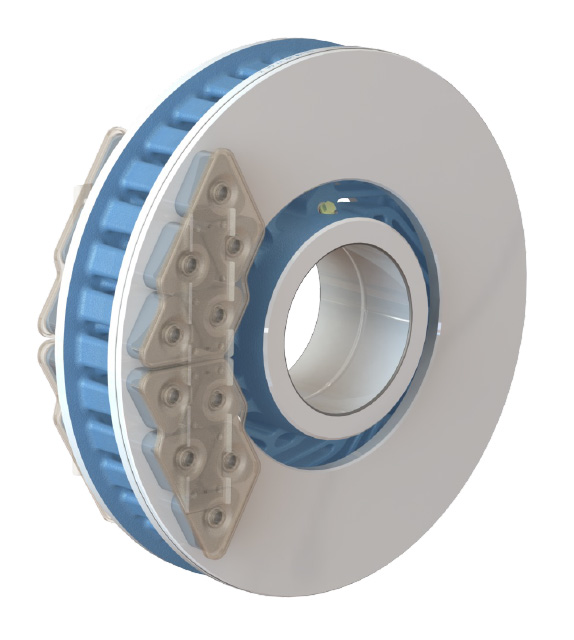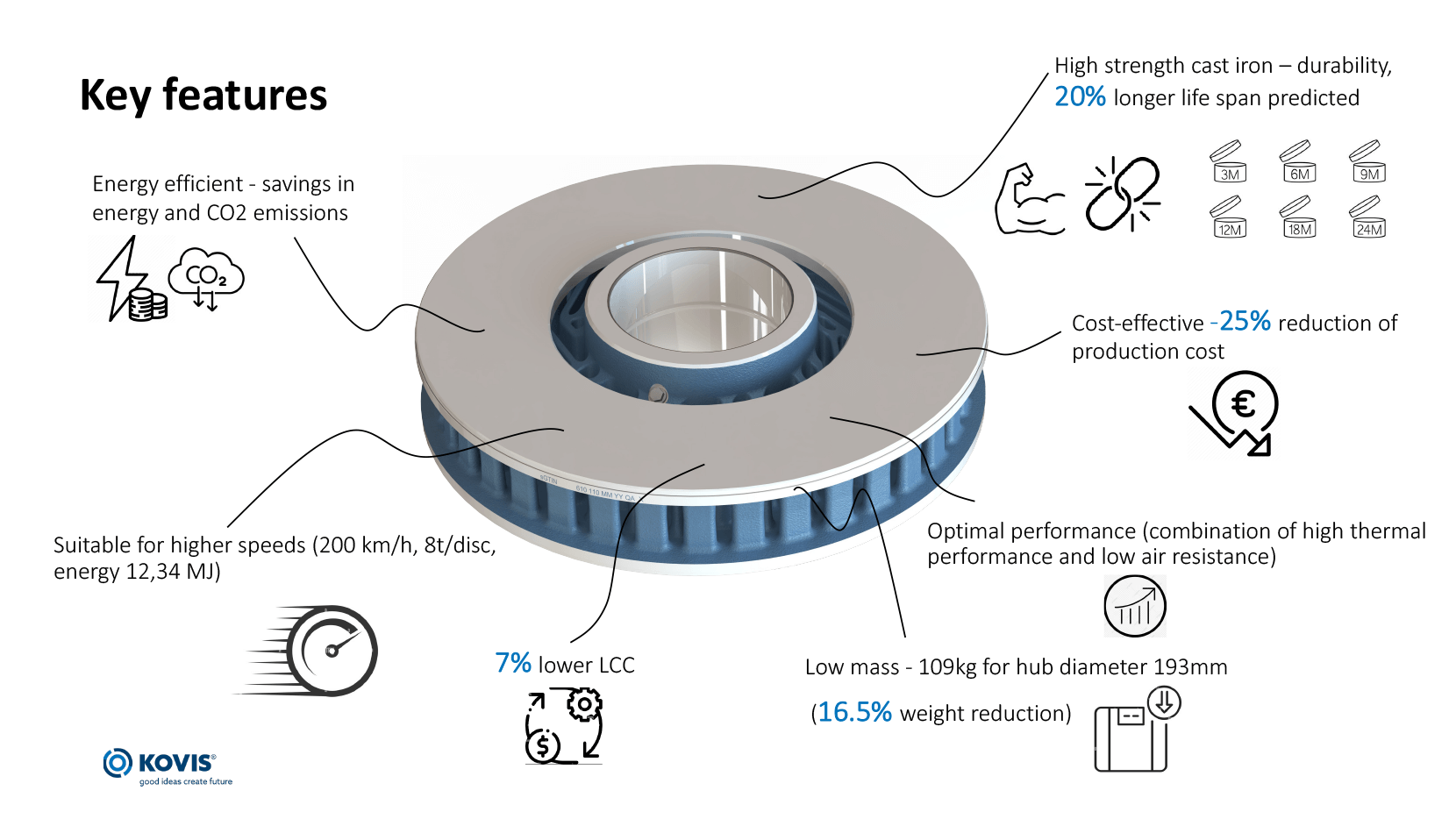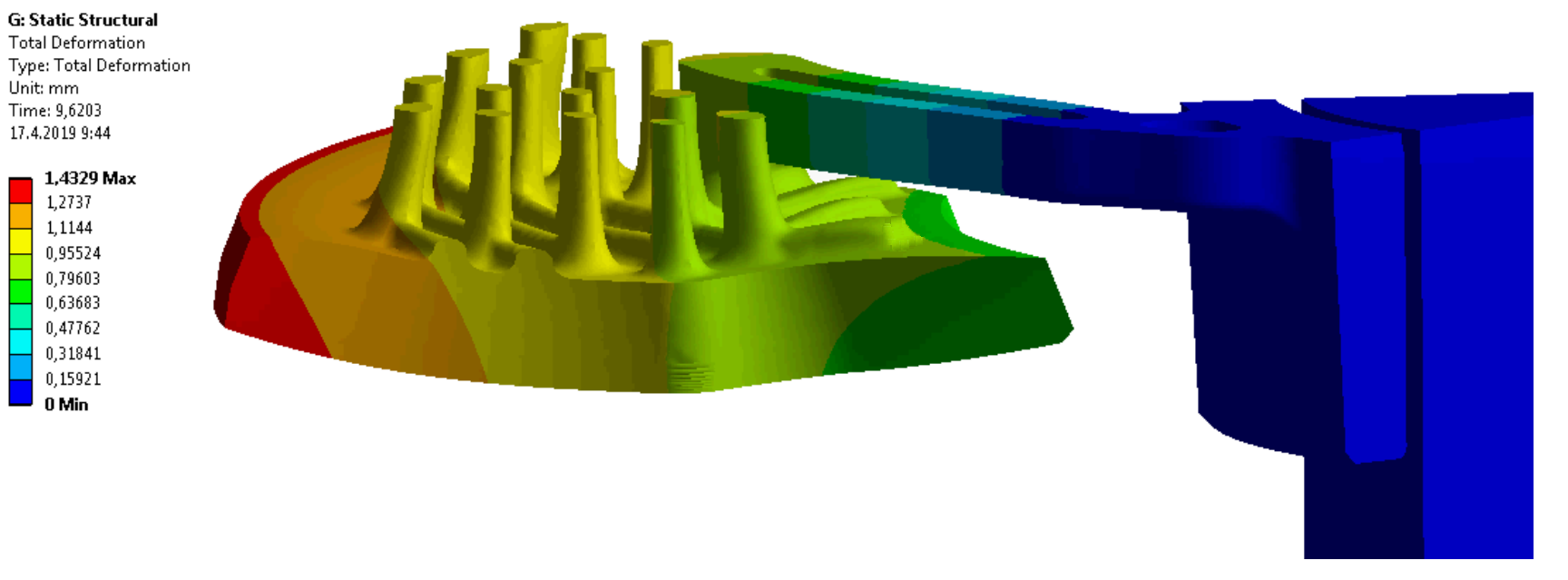sMart braKe is the heart of train braking.
It solves sustainability, material, market, safety and enviromental challenges smartly.
The new market innovation, offered by KOVIS and MIBA in the new alliance, combines the excellent properties of brake pads and brake discs.
The combination of pads and discs allows even better safety and reliability when braking. sMart BraKe is environmentally friendly because it reduces braking noise. This not only enables a more comfortable ride, but also a better quality of life for people near railways and metros.


New innovative brake pads

Benefits of innovative brake pad solution
- focus on optimized customer LCC
- additional friction material possible + 30% material increase
- reduction of single parts and reduction of assembly processeswear optimization
- hotspot avoidance optimization
- costoptimization

hard facts
- flexible brake pad for high-speed application
- reduction of deformation for better NVH characteristics
- temperature management optimized, about 150°C lower
- optimized disc coverage due to adjusted pad design
- Lower LCC costs
- cost reduction of equipment investment


Characteristics of sMart braKe FLEX
safety
- improved reliability of braking,
- optimized cooling performance -brake overheating avoided by increasing thermal dissipation efficiency and ventilation properties
- uniform heat flux
- stable friction properties
- hotspot avoidance optimization
- brake pad temperature management optimized
- optimized disc coverage brake pad design
- Dynamometer test successfully passed laboratory tests stable friction
health and environment
- less noise and CO2 emissions while-in-use
- less energy consumption and CO2 emissions while-in-use – optimized air flow, decreased ventilation (power) losses, optimized weight
- strong development of brake pad in no- ferrous free materials, fine dust reduction & NVH improvement
- reduction of brake pad deformation for better NVH characteristics

cost-effectiveness
- reduced life-cycle costs of friction pair (lower mass, easy maintenance, increased durability)
- optimized wear of the brake pad
- cost optimization of the pad due to decreased number of single parts




